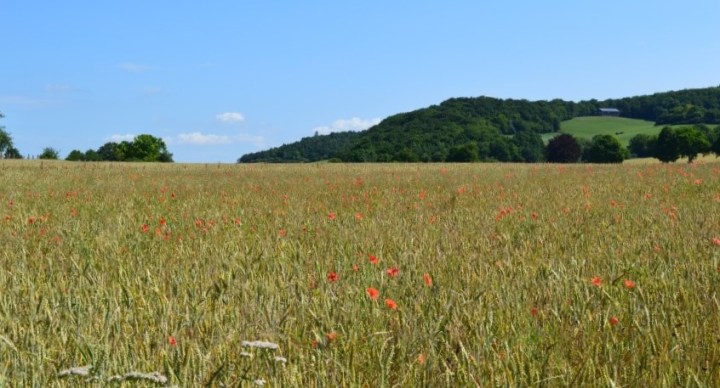Exploring local and landscape management actions, Costanza Geppert and colleagues recognise the value of flower strips but also point to the importance of organic agriculture when it comes to maintaining pollinator richness. Their new insights were recently published in Journal of Applied Ecology.
In recent years, the ‘insect Armageddon’ has received growing attention in Europe. The main driver of this insect decline is agricultural intensification, which deprives insects of food resources and nesting sites, while simultaneously exposing them to insecticides. In the 1990s, agri-environment schemes (AES), in which farmers are paid to implement biodiversity friendly agricultural practices, were introduced throughout the EU to mitigate the negative impacts of agricultural practices. Despite a plethora of studies on AES ecological effectiveness, the relative importance of different AES for biodiversity and ecosystem services is still little understood. Furthermore, it has become clearer and clearer that the effectiveness of AES changes depending on landscape context.

Organic farming and flower strips are the two most popular AES in Lower Saxony, Germany. Flower strips target pollinator insects in particular and are designed to concentrate a large amount of floral resources in a small area. By contrast, organic farming is implemented over the whole field and supplies several other benefits, such as enhancing pest control, preventing soil erosion and holding an increased amount of water. In recent years, flower strips have been the focus of many studies on pollination and have been promoted by the media, while less attention has been paid on the benefits of organic farming.
To understand which management actions are needed to enhance pollinator presence in agricultural landscapes, we evaluated the effects of landscape-scale mean arable field size and local management (flower strip, organic and conventional agriculture) on pollinator richness, abundance, reproduction and on their flower resources.

As expected, the flower strips stood out with the highest abundance and richness of pollinators (bees and hoverflies). However, organic fields, with their high amount of diverse floral resources, also sustained more pollinator species than conventional agriculture. It is important to point out that flower strips enhanced the reproduction of the bumblebee colonies, that were experimentally placed in each field, only when the surrounding fields were smaller. This positive effect of smaller fields on bumblebee reproduction is likely explained by additional field borders. By contrast, bumblebee colonies under organic farming benefited most from large fields, as larger organic fields provided larger pesticide free areas and a greater number of flowers.
Our results suggest that management actions both at the landscape and at the local scale are important to increase pollinator richness and abundance. Organic farming provided more flowers overall per field than narrow flower strips. However, bees and hoverflies cannot be protected only by improving conditions at one field, they all depend on the structure of the surrounding landscape. Landscapes including small agricultural fields and large organic fields interspersed with semi-natural areas, are the foundation of heterogenous and well‐connected landscapes, which are essential for pollinators.
Read the full article, Agri‐environment schemes enhance pollinator richness and abundance but bumblebee reproduction depends on field size, in Journal of Applied Ecology.
